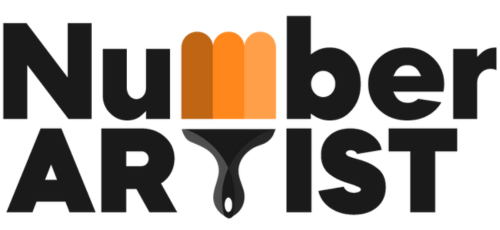How to Start Painting - A Beginner’s Guide to Save Time and Money

A lot of people feel the urge to create something. This is what makes art so appealing.
In fact, some say that one of the main draws of generative AI is the fact that a lot of people are experiencing what it’s like to be creative for the very first time. While appealing, it’s still not the real thing.
If you only knew how little it takes to make your first steps toward becoming an amateur painter. If only they had the answer to the question: how to start painting?
Well, today, we’ll try to show you just that.
Here’s a beginner’s guide that will, hopefully, alleviate a lot of stress, save you time and money, and teach you how to become more proficient at painting from day one.
1. Start with the right style

The best place to start is by picking the right style. You see, basic painting is already too hard, which means that choosing something that even masters struggle with might cause you to quit painting sooner than you expected. Just think about the Dunning-Krueger effect and avoid putting yourself in a position to quit before you actually start seeing any improvement.
There are a few assignments that can be quite simple and help you out early on.
First, you can consider painting a still life. Choose an inanimate object like a vase or an everyday item, or choose fruit. Then, focus on depicting it to the best of your ability, trying to capture its curves, shadows, and highlights.
You can also try painting landscapes early on. This means that you have a lot of homogenous scenery, and you’ll have a chance to focus on broad shapes and basic color gradients.
One idea you might not have expected here is the suggestion to start with abstract art. This allows you the freedom to experiment and reduces the pressure of getting the details right. Here, the margin of error is significantly wider, and you’ll feel a lot less pressure.
Ultimately, when trying to figure out how to start painting, you could choose a route that will allow you to focus on the technique and skip all the challenges of the creative aspect. The way to do it is to get one of those paint-by-number kits and start working on your technique.
You can also do this in order to rekindle your passion for painting by just moving past the challenging part and just focusing on its most enjoyable aspects.
2. Research and get invested

Another thing you need to do is start researching. As a 21st-century painter, you have more resources available than any of your predecessors. This means that you have a chance to find out about any technique that you can find online by just googling.
Sure, some courses are locked behind a paywall, but this is usually not as expensive as you think. This is especially the case if you set a budget for this hobby and try to compare the amount of money you spend/waste on other activities that are nowhere near as fulfilling.
On the other hand, you can easily find a painting tutorial or two online, even for free. After all, YouTube is full of such content.
The best thing about this is that it’s a very micro-learning-friendly approach. You have so many little questions, and you can look up separate tips. These can range from major painting techniques to tips on how to maintain your brushes.
This online content is also so much better than traditional textbooks and classes, seeing as how it’s designed to move at your preferred pace.
Moreover, you can start following painting communities, which will help you get enough inspiration and even tips and ideas that you should try out. This is especially the case when you start looking for tips on how to pick the best custom paint-by-numbers paintings.
3. Get the basic equipment

Truth be told, when you start researching how to start painting, this is a task that you’ll have to deal with before many others. First of all, you need to learn how to get some quality painting gear.
In general, you don’t need to have too many brushes. Here, you should focus on quality above quantity. A few quality brushes are better than a wide variety of cheap brushes.
You can start with a basic set of primary colors. This will save you money, but it will also be quite helpful in teaching you how to make your own colors. This will create conditions where you have to be resourceful, and it will be a great basis for your later painting efforts.
Keep in mind that, early on, you’ll make a lot of mistakes. Sure, some are fixable, but in order to reduce your exposure to this type of anxiety, you should use student-grade canvas or paper. The quality is more than decent, and the cost won’t be too high.
Now, there are a few more tips on how you can save money on this early on. First, you want to buy in bulk where possible. Keep in mind that if you plan to paint a lot, buying big packages of paper and color may end up saving you a substantial amount of money.
Local art supply stores often have sales and discounts, but your best bet is probably online marketplaces. This way, you get the most competitive prices; just make sure that these basic painting supplies are of the quality that’s advertised on the site.
4. Create a roadmap for mastering painting theory

While this is something that no one likes to talk about, it’s inevitable that you’ll have to learn some theory. The problem with this is that when you just google “how to start painting,” you’ll be overwhelmed with all sorts of information.
According to specialists dealing in paint-by-number kits by Number Artist, the best way to cut this journey short is to create a roadmap of all the most vital painting theory you’ll have to master.
For instance:
- Color theory: The first thing you need to understand is the color wheel, which consists of primary, secondary, and tertiary colors. Then, you have to learn how it all comes down. This means learning about complementary, analogous, and triadic color schemes. This is all applicable knowledge, and instead of just learning, you need to try and apply each of these concepts in practice. This will also keep your learning immersive.
- Composition: Next, you need to learn the theory behind the leading lines, focal points, and thirds. This is something that you’re probably already doing (instinctively), but once you really know that you’re doing it and start semi-consciously focusing on it, the results will be staggering.
- Lighting and shadow: Other than that, you need to learn a thing or two about lighting and shadow. You need to learn how to highlight and shade objects, and you also need to understand how natural and artificial light affects your lines.
Also, keep in mind that this is just basic painting and that there’s so much more that you have to learn in order to consider yourself a proficient painter.
Lastly, you need to learn all of this from trustworthy sources.
Making a decision to start is easier when you have a starting point
Every beginning is scary, and the question “how to start painting” sounds even scarier when you don’t know what it entails. However, once you decide what you’re going to paint, how you’re going to paint it, and what kind of equipment you need, things become a lot simpler to grasp. Even more importantly, once you learn how to make your progression systemic, there’ll be no stopping you.


